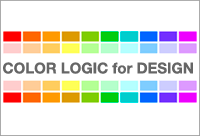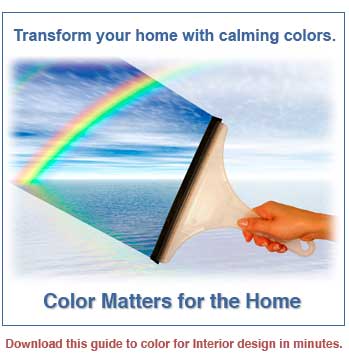Q&A-Color & Shapes
Do certain colors match certain shapes?
Can color change the size of the object we see?
Memory? Shapes vs. Colors
Question:
I am currently working on an experiement to look at individuals' ability to remember shapes versus colors. (Our theory is that colors will have a more powerful effect on memory) If anyone has any info or knows of any websites or texts about this subject, it would be greatly appreciated. Thanks!
Jill Morton/Color Matters
Yes! By hanging an extra "tag" of data on visual scenes, color helps us to process and store images more efficiently than colorless (black and white) scenes, and as a result to remember them better, too. Read more and see the source of this "Color and Memory" research at Why Color Matters.
Chris Willard
Research shows that neural networks are strengthened by repetition and by the creation of meaning when the new information is assimilated. This brings up many ideas: one is Livingston's thoughts on the three visual pathways: color, hard edge definition, and motion. Obviously shape is hard edge and it's redness is color. It also brings up Piaget in terms of constructing meaning as well as Derrida who showed the difficulties people have in processing information that is ambiguous.
I've seen people classify geometric shapes by shape more than color although the shapes were colored. A child not knowing "hexagon" would probably classify the shape as "the red thing." It depends on your prior knowledge and the way you've learned to categorize in the quickest manner.
Sivik et al. have done studies in Goteborg, Sweden showing that color helps those with alzheimers to remember objects or people.
Jay Hilbun
Color and Human Response tells exactly what the title implies. Written by Faber Birren with a call nuber of 155.91145. It doesn't imform just on your subject but it has a section about it and some other sections that might be useful. I don't know if you're a student or a college graduate or what but to understand color and memory you need to understand just plain memory. Try, Memory by Barry Gordon,M.D.,Ph.D with a call number of 153.12. Please understand that if you already know all this to not take this as an insult! To understand memory you must understand the brain. Try: The 3-Pound Universe written by Judith Hooper and Dick Teresi with a call number of 152. Try World of The Brain by Alvin and Virginia Silverstein; call number 612.82. Try THE BRAIN Mystery of Matter and Mind; a U.S.NEWS BOOK call number 612.82. Please!!! Just in case you're (which you probably are) way more informed than I am do NOT take this as an insult!!!
Since your project is on the memory of objects and colors that people see then you need to understand the eye. Try THE EYE, Window to the World another U.S.NEWSBOOK with a call number of 612.84.This book has nothing to do about memory (well, sort of) but check out Sleep Thieves by Stanley Coren; call number 612.821. (I thought that if you're interested in memory then you might be interested in the study of sleep) I promise that this book will be worthwile if you pick it up.
Do certain colors match certain shapes?
Lance Payne
I believe I have read that the primary and secondary colors "fit" very well with certain shapes. Such as red works best with squares. Blue goes with circles. Yellow with a triangle (or is it orange and triangles). How about purple? Green? etc. Is there anyone out there that can verify that certain colors and more closely associated or work better with specific shapes? Can you lead me to more information on this subject. Book, title names, etc. Thank you!
Herizon
Feng Shui design professionals consider the 5 natural elements, 5 basic colors, and 5 basic shapes in a connected representation of each other. I.E., red is triangular (fire), white is circular (metal), black is undulating (curving, flowing lines, representing water), green is rectangular (especially vertically, representing wood), and yellow is square (earth, foundation).
Lance P.
Herizon (& MacE & Judy G.) Many thanks for your comments. I'm not familiar with Feng Shui or his books and work. I have my own ideas about color and shapes and believe these colors have a strong affinity to these shapes: red = square; orange = diamond; yellow = triangle; green = oval; blue = circle; purple = pentagon/hexagon. (black = nothing and white = everything). I think my ideas are far superior to Feng Shui' -- What do you think?
Herizon
Feng Shui is a philosophy/science based on a 5 thousand year old "way of life" begun in China and other Asian countries. Background: FS "connects person to place" by believing that WHERE we are is as important as WHO we are. Just as we influence our environments, our environments influence us. FS studies those influences and the power of earth & human energy, etc. to restore balance to place, thereby restoring balance for all living things in that place. I'd be interested to know how you came up with your color/ shape theory. It's intriguing. :)
Mac:
Herizon In your post you mentioned.... "Leaping fire is most like the triangular shape. Fire is mostly linked with the color red. So, the element of fire and the color red fit with the triangle!" But I have possible problems with this. Leaping Water (waves) could be triangle in shape too. Earth (mountains) could be "peaky" and triangular in shape too. Is there linkage between 'red' and some triangular form? Oh, maybe. But maybe for different reasons. And maybe it's not so much 'triangular'. What are the significant attributes of a triangle that might tie to the color red? The angles? the horizontal bottom? the slanted sides? Should it be equilateral? Can it be scalene? How about a right angle triangle? Can we get down to the nitty-gritty here? What visual features or components are the drivers? the elements that tie it to Red?
Herizon
That's very interesting--I can see your reasoning. Here are some FS thoughts to consider! Leaping fire is most like the triangluar shape. Fire is mostly linked with the color red. So, the element of fire and the color red fit with the triangle! The metal element (when reduced to its base form, by applying heat--fire) becomes circular as it puddles. FS considers the metal element as circular in shape and the color white. Just a few examples!
Lance
Herizon, thanks for informing me that "FS" is a "way of life" and not a person. From what little you said of it -- it sounds as though it may be a genuine path for sincere seekers. Now ... I came up with my ideas of color fitting certain shapes on a very simple assumption -- which is: If there are three primary colors(red, yellow and blue) there, also, just might be three primary shapes: the square, triangle and circle. If, in fact, this is the case then which primary color fits the "best" with which primary shape? And so after giving this some thought and using prisma color pencils to "mix and match" the primary colors with primary shapes it only seemed logical (and reasonable) that red fit the square, yellow/triangle and blue the circle. And from here it was simple to proceed to the secondary colors and their most appropriate shapes. Keep in mind that I do believe these colors have a natural affinity to these shapes I've identified. Check it out with your own colored pencils or other medium. I believe that these primary and secondary colors and their corresponding shapes apply only to our local sphere of reality(as we have evovled here on this planet earth) Other colors and shapes may be something different in another place in time within another part of our universe. However, the blue/circle combination seems to be the most universal to us here on this planet. The "circle" is a very archtype shape and the color blue is the most predominant. What do you think? Am I nuts -- or what? (Also, just an afterthought here: when I say the color red "fits best" with a square, the square does not have to be a perfect square but only "square like" or "generally square". And this also applys to the other primary colors and their shapes. In otherwords the shapes can be just generally in the shape of a square, circle like, triangular, etc.)
Can color change the size of the object we see?
Question:
I am just curious as to whether color can change the size of the object we see? For example, if I have a grey circle on a grey background will the circle tend to appear larger than its true size? And next question, if color does affect size, are there any colors that would remove this effect. If not, how should I change the object manually to minimize this effect? John Kim
LKPete:
The short answer to your query is YES. Check out Josef Albers work on colors' effect on each other and the illusion of size, etc.
Mac:
John Kim, And Little Red Riding Hood said "My! My! What Big Teeth You Have!" Did the Wolf brush with Gleem? Bright White teeth on a darkened background? - - - LKPete has pointed you in a good direction, to Albers. - - - But then, consider this too. If size perception "is" altered by various contrasts, shapes, forms, positions, and so on, is it a lasting thing? You might want to look into 'makeup' techniques too. Proper application of face make-up seems to alter perceived jawline shape, facial bone position and size, eye inset, nose protrusion, etc. - - - I guess there are limits to this though. If someone wants part of their body to look really big, painting it bright yellow might not work well though, albeit sensationalistic! Study make-up techniques, study art techniques, like those of VanWyk, and of course read Albers too.





